Type of resources
Topics
Keywords
Contact for the resource
Provided by
Years
Formats
Representation types
Update frequencies
Scale
Resolution
-
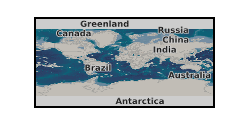
During 2010-11, as part of the Carbon Capture & Storage (CCS) Demonstration Competition process, E.ON undertook a Front End Engineering Design (FEED) study for the development of a commercial scale CCS demonstration plant at Kingsnorth in Kent, South East England. The study yielded invaluable knowledge and the resulting material is available for download here. This Key Knowledge Reference Book is the result of the early stages of a Front End Engineering and Design (FEED) study to add a post-combustion Carbon Capture and Storage (CCS) facility to a new supercritical coal fired power plant at Kingsnorth following the award of a FEED contract with the Department of Energy and Climate Change (DECC) in March 2010. This study constitutes the first phase of a 3-phase approach to FEED adopted by E.ON UK. The Kingsnorth CCS Project consists of two 800MW power generating units at Kingsnorth power station, a 300MW (net) post combustion carbon capture plant integrated into the power plant with associated dehydration and compression facilities, a 36inch pipeline for transportation of CO2 to the Hewett gas field in the southern North Sea and a new platform at this field with associated injection facilities and wells. The Key Knowledge Reference Book is publicly available to all CCS project developers and other interested parties to ensure the lessons learned from this FEED are disseminated as widely as possible to advance the roll-out of Carbon Capture and Storage. This Key Knowledge Reference Book comprises information provided in the following structure: Chapter: 1 Executive Summary. 2 Content. 3 Table of Acronyms. 4 Project Design. 5 Technical Design - Carbon Capture and Compression Plant. 6 Technical Design - Pipeline and Platform. 7 Technical Design - Wells and Storage. 8 Health and Safety. 9 Environment and Consents. 10 Project Management Reports. Summary commentary on each of the chapters is provided to give both context to the information supplied and to pull out key areas of learning in each section. The Key Knowledge Reference Book is available for download and supporting materials for each chapter are available. Note this dataset is a duplicate of the reports held at the National Archive which can be found at the following link - http://webarchive.nationalarchives.gov.uk/20121217150421/http://decc.gov.uk/en/content/cms/emissions/ccs/ukccscomm_prog/feed/e_on_feed_/executive_summ/executive_summ.aspx
-
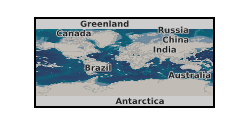
During 2010-11, as part of the Carbon Capture & Storage (CCS) Demonstration Competition process, E.ON undertook a Front End Engineering Design (FEED) study for the development of a commercial scale CCS demonstration plant at Kingsnorth in Kent, South East England. The study yielded invaluable knowledge and the resulting material is available for download here. This chapter presents the results of studies into the undersea storage reservoir for CO2, in the Lower Bunter sandstone of the depleted Hewett natural gas field, the design recommendations for new wells and recommendations for abandonment of existing wells. The study addresses the following areas; Storage Reservoir integrity and capacity; Construction and completion of wells; CO2 properties and injectivity; Abandonment of existing and new wells; Monitoring; Hazard Identification (HAZID) and Risk Assessment. Some of the key aspects of the Wells and Storage technical design are; Wells that have already been abandoned using conventional methods pose a risk of future leakage to the surface and thereby compromising the integrity of the CO2 store; Data acquisition can be difficult: ensure that all required data sets are identified and make requests as early as possible to ensure quality data is obtained resistant standards; The CO2 equation of state and phase diagram is paramount in designing the injection process. Temperature and pressure of the CO2 must be carefully specified to avoid uncontrolled condensation or vaporisation; Many standard components and materials used in the offshore industry are suitable for use in CO2 flowing regime injection applications. Particular attention must be paid to corrosion resistance and longevity in a CO2 environment; For drilling injection wells into a depleted hydrocarbon reservoir, the principal challenge is drilling into low pore pressures, whilst minimising formation damage. Further supporting documents for Chapter 7 of the Key Knowledge Reference Book can be downloaded. Note this dataset is a duplicate of the reports held at the National Archive which can be found at the following link - http://webarchive.nationalarchives.gov.uk/20121217150421/http://decc.gov.uk/en/content/cms/emissions/ccs/ukccscomm_prog/feed/e_on_feed_/storage/storage.aspx
-

The BGS collection of 1:10 560 / 1:10 000 National Grid Series geological maps. These maps are based on the Ordnance Survey National Grid series of maps, which are defined by the 10 km intervals of the larger 100 km square identified by a specific two-letter code. Each map is thus denoted by a unique reference, e.g. SP 29 NW. SP=100 km square; 29=10 km square; NW=5 km square. Since field mapping is generally undertaken at the scale of 1:10 000 (or equivalent), these maps are the largest-scale main series of geological maps that BGS holds. A small number of remote areas were mapped at 1:25 000 scale, the subsequent maps are also at 1:25 000 scale and are included in this series. The equivalent to the National Grid Series prior to the 1960s is the County Series (at 1:10 560 scale). In the 1960s, this series started to be replaced by 6 inches to 1 mile (1:10 560 scale) National Grid sheets based on the four quadrants (NW, NE, SW, SE) of a 10 km Ordnance Survey National Grid square. Areal coverage provided by the National Grid series of large-scale maps is limited in extent and the preceding County series of six-inch maps can still be the most up to date map available for some areas. Geological maps represent a geologist's compiled interpretation of the geology of an area. A geologist will consider the data available at the time, including measurements and observations collected during field campaigns, as well as their knowledge of geological processes and the geological context to create a model of the geology of an area. This model is then fitted to a topographic basemap and drawn up at the appropriate scale, with generalization if necessary, to create a geological map, which is a representation of the geological model. Explanatory notes and vertical and horizontal cross sections may be published with the map. Geological maps may be created to show various aspects of the geology, or themes. The most common map themes held by BGS are solid (later referred to as bedrock) and drift (later referred to as superficial). These maps are, for the most part, hard-copy paper records stored in the National Geoscience Data Centre (NGDC) and are delivered as digital scans through the BGS website.
-

For much of the Geological Survey's existence, the County Series of maps were the standard large-scale maps on which geological mapping was undertaken. These maps are based on the Ordnance Survey County (or six-inch to the mile) series of maps. These maps were cut up to be used in the field to record geological observations, and on return to the office, the geology was transferred to a complete County Series map, which after approval was known as a 'standard' (England / Wales) or 'clean copy' (Scotland). This dataset contains the 'standard' or 'clean copy' County Series maps held by BGS. Geological maps represent a geologist's compiled interpretation of the geology of an area. A geologist will consider the data available at the time, including measurements and observations collected during field campaigns, as well as their knowledge of geological processes and the geological context to create a model of the geology of an area. This model is then fitted to a topographic basemap and drawn up at the appropriate scale, with generalization if necessary, to create a geological map, which is a representation of the geological model. Explanatory notes and vertical and horizontal cross sections may be published with the map. Geological maps may be created to show various aspects of the geology, or themes. The most common map themes held by BGS are solid (later referred to as bedrock) and drift (later referred to as superficial). These maps are hard-copy paper records stored in the National Geoscience Data Centre (NGDC) and are delivered as digital scans through the BGS website.
-
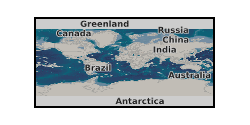
In March 2010, the Scottish CCS (Carbon Capture & Storage) Consortium began an extensive Front End, Engineering and Design (FEED) study to assess what would be required from an engineering, commercial and regulatory, perspective in order to progress the CCS demonstration project at Longannet Power station in Scotland through to construction. The study yielded invaluable knowledge and the resulting material are available for download here. The UK Government's basic premise for financially supporting CCS demonstration is to facilitate further commercial scale CCS projects in the UK and internationally. DECC have made knowledge transfer activities a key requirement of the UKCCS Demonstration Competition. The Consortium identified stakeholder groups particularly relevant for knowledge transfer activities. Stakeholders were categorised in terms of: Knowledge needs; Potential to influence CCS deployment; Experience/ expertise they can bring to demonstration knowledge; Potential to disseminate demonstration knowledge; The assessment identified six priority audience groups: Academics, Environmental NGOs, Finance and Insurance, Industry, Initiatives and Developers and Regulatory and Policy. The Stakeholder Profiling Interviews sought to answer the following questions: Who are the key CCS stakeholders? What information are these stakeholders interested in from a CCS demonstration? What are the preferred methods for key stakeholders to receive and access information? Are the key stakeholders interested in interacting with CCS demonstrations, and if so, what is the preferred method to facilitate this interaction? This section of the FEED Close Out Report combines over 30 stakeholder interviews, with examples of knowledge transfer leading practice. Other FEED workstreams considered wider stakeholder engagement, for example, local community engagement and public communication. The appropriate summary section from the Feed Close Out Report can be downloaded as a PDF (Stakeholder profiling.pdf). The main text of the FEED Close Out Report, together with the supporting appendix for this section can be downloaded as PDF files. Note this dataset is a duplicate of the reports held at the National Archive which can be found at the following link - http://webarchive.nationalarchives.gov.uk/20121217150421/http://decc.gov.uk/en/content/cms/emissions/ccs/ukccscomm_prog/feed/scottish_power/stakeholder/stakeholder.aspx
-
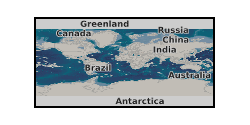
Data produced from NERC Grant NE/L000059/1 - IODP Exp 335 report which is open access and includes all the observations and other data generated on the Expedition. http://publications.iodp.org/proceedings/335/335toc.htm
-
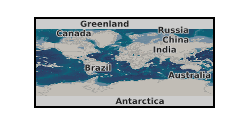
During 2010-11, as part of the Carbon Capture & Storage (CCS) Demonstration Competition process, E.ON undertook a preliminary Front End Engineering Design (FEED) study for the development of a commercial scale CCS demonstration plant at Kingsnorth in Kent, South East England. The study has yielded invaluable knowledge on areas including project design, technical design, health and safety, environment, consents and project management. The E.ON UK FEED study material is available for download.
-
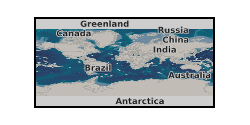
In March 2010, the Scottish CCS (Carbon Capture & Storage) Consortium began an extensive Front End, Engineering and Design (FEED) study to assess what would be required from an engineering, commercial and regulatory, perspective in order to progress the CCS demonstration project at Longannet Power station in Scotland through to construction. The study yielded invaluable knowledge and the resulting material are available for download here. This section of the report is provided as a support document to the tangible learning and documentation contained within the FEED Close Out Report and accompanying appendices. The experiential learning of the teams working across key functions of the FEED study was captured in guided discussions halfway through FEED to establish the specific challenges, successes and learning of the various workstreams involved in undertaking FEED. Representatives from all the workstreams were brought together in December 2010 for a Consortium-wide Lessons Learned Workshop to capture specific, discrete lessons that could benefit future CCS FEED studies in the UK and abroad. Five key themes emerged consistently across workstreams: Ensuring an appropriate mobilisation period Early engagement with key stakeholders Cross-Consortium communication to present an integrated Consortium Recognising restrictions imposed by the bounds of a competitive procurement Working with uncertainty across regulation, scope, budget and political will Workstream specific learning outcomes are summarised in the main report, with detailed examples included in the appendices. The technical and communication workstream appendices both contain examples of actual documents used during the ScottishPower Consortium FEED (National Grid CCS staff training material and the ScottishPower Consortium Communications Strategy) that were considered useful for future CCS project Developers. The appropriate summary section from the Feed Close Out Report can be downloaded as a PDF below (Lessons learned.pdf). The main text of the FEED Close Out Report, together with the supporting appendix for this section can be downloaded as PDF files. Note this dataset is a duplicate of the reports held at the National Archive which can be found at the following link - http://webarchive.nationalarchives.gov.uk/20121217150421/http://decc.gov.uk/en/content/cms/emissions/ccs/ukccscomm_prog/feed/scottish_power/lessons/lessons.aspx
-
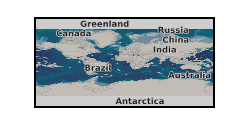
In March 2010, the Scottish CCS (Carbon Capture & Storage) Consortium began an extensive Front End, Engineering and Design (FEED) study to assess what would be required from an engineering, commercial and regulatory, perspective in order to progress the CCS demonstration project at Longannet Power station in Scotland through to construction. The study yielded invaluable knowledge and the resulting material are available for download here. This section of the report illustrates how the End-to-End CCS chain must be considered as a system as well as separate elements. It builds upon the description of the individual elements contained in Section 3, and captures the development of the End-to-End CCS chain design carried out during FEED. Specifically, this section focuses on the following aspects: Commissioning the system in preparation for operations, as well as decommissioning at the end of the capture and storage period; Operations and maintenance activities; Control; Metering and monitoring; Venting; This section also provides some selected information on the individual CCS chain elements and a summary of the RAM (reliability, availability and maintainability) analysis undertaken during FEED of which one of the key outputs was the anticipated CO2 injection profile for the project. The appropriate summary section from the Feed Close Out Report can be downloaded as a PDF (End to end CCS chain operation.pdf). The main text of the FEED Close Out Report, together with the supporting appendix for this section can be downloaded as PDF files. Note this dataset is a duplicate of the reports held at the National Archive which can be found at the following link - http://webarchive.nationalarchives.gov.uk/20121217150421/http://decc.gov.uk/en/content/cms/emissions/ccs/ukccscomm_prog/feed/scottish_power/ccs_chain/ccs_chain.aspx
-
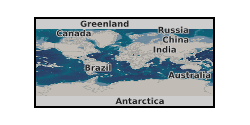
The two earthquake scenario narratives are communications tools created to engage the local population and policy makers in Weinan city. They will be uploaded on the Overseas Development Institute website and be publicly accessible.
 NERC Data Catalogue Service
NERC Data Catalogue Service